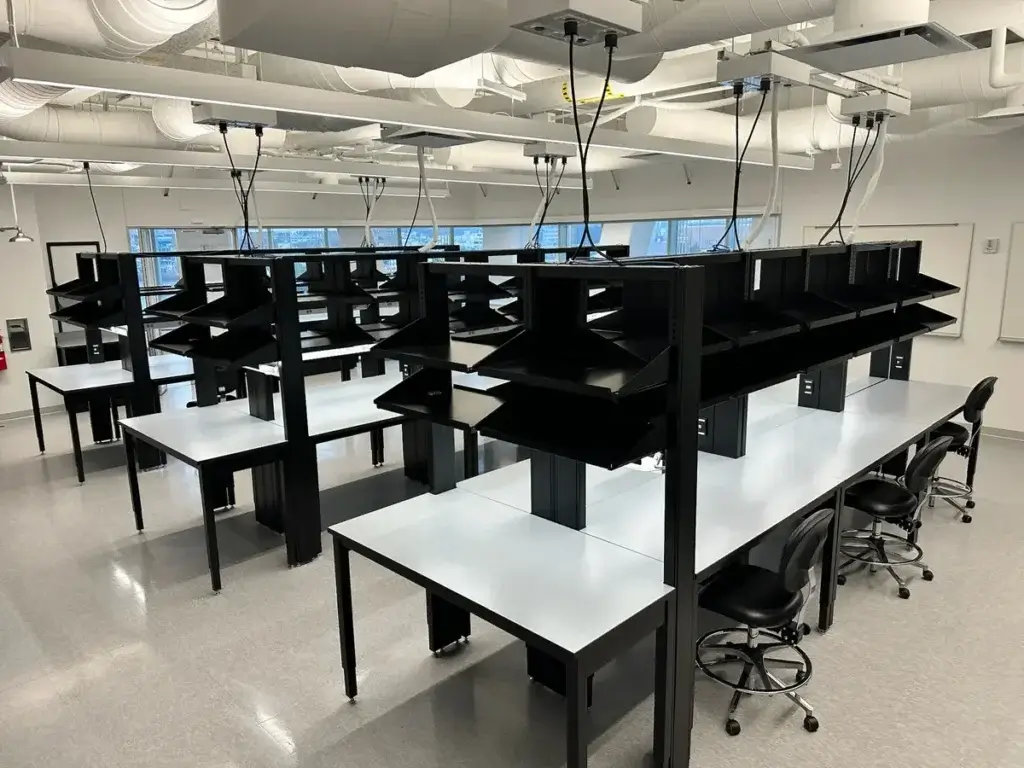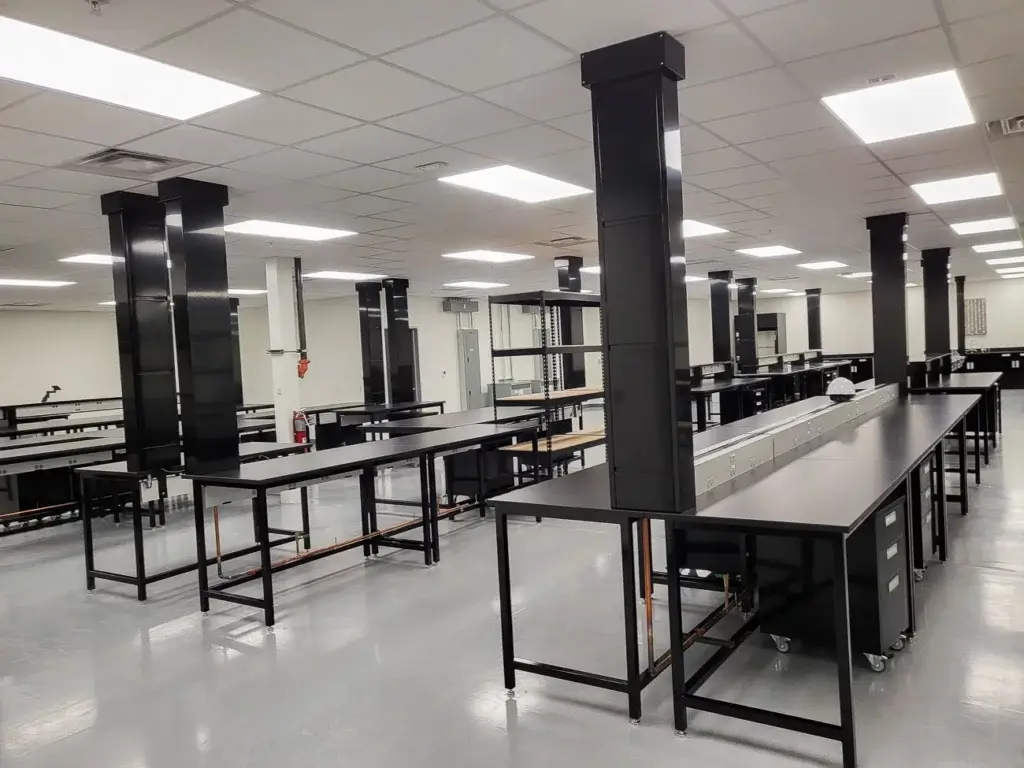

Science progresses rapidly and constantly. Consequently, when new technology emerges, research shifts. Naturally, laboratory environments requirements change constantly. Designing a lab solely for today is an outdated approach. These concepts become restrictive and inefficient. Therefore, having a future-proof lab design is key. Ultimately, it ensures long-term success. Moreover, it’s a smart investment.
In our 2-part series, with this being part one, we discuss flexibility and adaptability. These are, in fact, future-proof lab design’s cornerstones. Achieving a flexible lab design along with an adaptable laboratory layout ensures longevity for the lab to be there for tomorrow’s discoveries and not just today’s experiments.
The Imperative of Flexibility in Future Proof Lab Design:
Truly flexible lab design handles variety of research. For instance, it handles diverse equipment. Consequently, no major structural changes are needed. This saves time and moreover, minimizes disruption. Thus, your lab quickly meets new demands.
Consider these key aspects for flexibility:
- Modular Furniture Systems: Fixed benches aren’t completely unnecessary. At the end of the day picking the best system that works for you, and your lab is key. However, for modern laboratories looking to stay ahead, choose modular lab furniture. For example, mobile lab worktables work well. Additionally, adjustable height benches work great to move with researchers as they do. Mobile storage units help too. Consequently, these allow easy space changes. If needs change, reconfigure easily. Create layouts for projects and lab workflow.
- Open Lab Concepts: Specific containment is vital sometimes and should not be ignored if required. However, when and if not needed, open lab designs boost collaboration, offering great flexibility. Not to mention, shared equipment zones work well. Furthermore, adaptable benching systems fit open plans and can be modified for research teams.

- Flexible Utility Distribution: Plan accessible and adaptable utility connections. Clearly, power, data, gas and vacuum access is key and matters. Overhead service carriers can in the distribution of these utilities too. Moreover, modular wall panels are useful. Having strategic floor ports allow equipment changes. Fostering easier relocation or addition of equipment, avoiding costly infrastructure overhauls in the future.
Building in Adaptability Lab Design:


Adaptability, by definition, means the quality of being able to adjust to new conditions. In respect to labs, they must anticipate future changes. Research focuses shift and technology evolves.
Consider these elements for an adaptable laboratory layout:
- Different Containment Level Zoning: Design specific lab zones and adapt them to varied biosafety levels and different containment needs. Be sure to incorporate adaptable ventilation and designate areas for quick sealing if needed.
- Scalability of Infrastructure: Plan core infrastructure for growth not just for today if possible. For example, consider HVAC needs. Similarly, think about electrical capacity.
Plan data networks carefully and if possible slightly oversize these systems initially. Consequently, this avoids costly upgrades later. Planning for this now helps with seamless transition in case your lab expands or adopts demanding tech. - Standardization of Components: Standardize equipment sizes, types, fittings and furniture. This simplifies future replacements and adding or replacing new items becomes easier. Reconfigurations are simpler. But also be aware that sometimes, standard furniture sizes won’t always meet requirements, this is where custom furniture options come into play. At OnePointe Solutions, we design custom lab furniture that can be replaced just like standard offerings. Giving you the ability to still have adaptability in your lab without compromise.
By prioritizing flexible lab design and an adaptable laboratory layout early, you build a strong base for you lab to unlock new discoveries for tomorrow.
Next Steps
If you’re needing help with you lab design, contact us to speak with a representative today! And for more helpful guides and tips, check out our blog.


